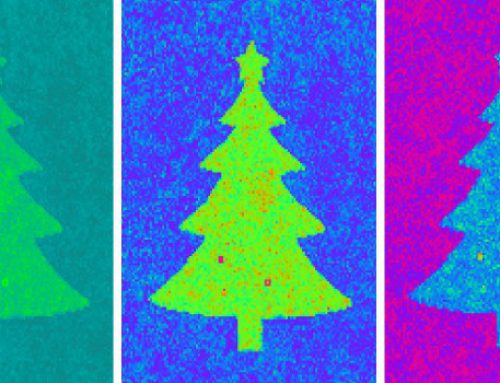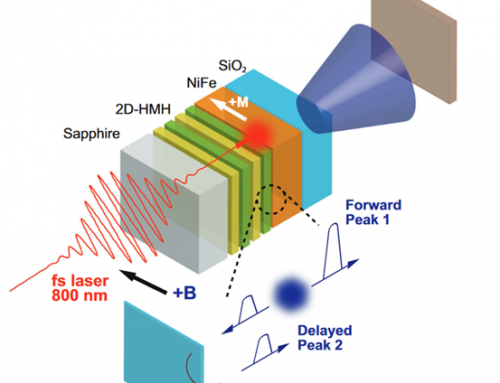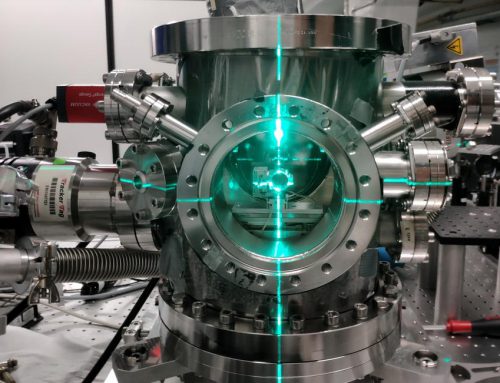Prototype electronic controlling unit was built for efficient and reliable data acquisition with fast optical delay line. The unit comprises digital sine generator with time marker and audio amplifier. Due to limited budget the sensor-less triggering in data acquisition scheme based on time relation of the driving sine signal of the speaker was used.
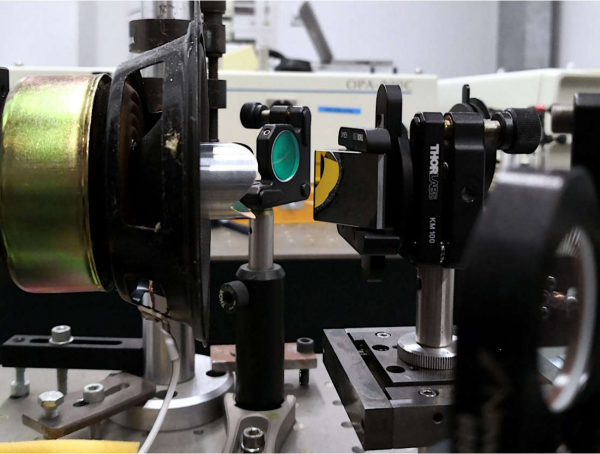
Picture of the optical part of the fast scanning optical delay line (corner cube retroreflector integrated with the speaker and knife edge mirror prism).
For rapid prototyping a modern microcontroller with an integrated digital to analog converter was used. The principle of operation of the generator is as follows: fast microcontroller allows us to direct synthesis of sine signal as well as generating additional triggering pulse.
The time relation between two signal is precisely defined and stable during long term operation. The triggering signal is connected to Lock-in amplifier. Used Lock-in amplifier has such a functionality than can operate as analog to digital converter and start of sampling can be precisely triggered by external TTL triggering signal.
When the sine analog drives the speaker membrane at the exact beginning of the sine the data acquisition starts. In this period of time 7 membrane travels along the given distance so-called excursion. We choose a speaker with relatively long excursion to cover broad time scale to include full THz pulse waveform.
In Figure below we present comparison of the result obtained by means of previous version of the set-up with improved fast scanning measurements of the same phase mask element in top and bottom row, respectively. The spatial resolution was improved and higher sampling resolution was possible to apply.
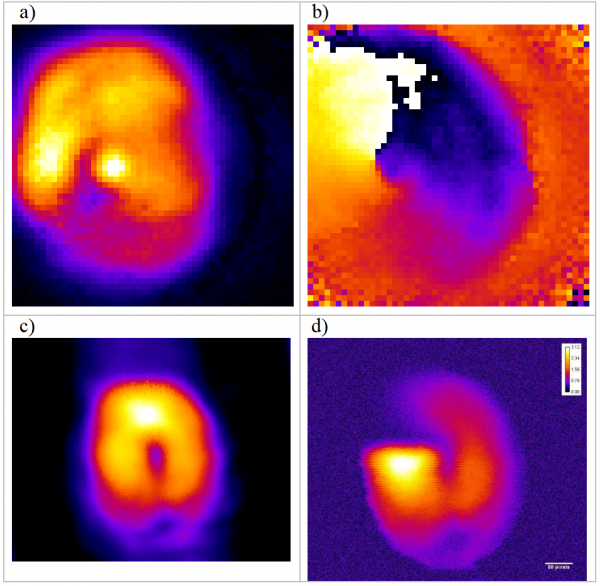
Result of 3D printed SPP mask characterization, a-c) THz vortex beam intensity map (detector with silicon lens), b-d) the beam phase distribution. The bottom row depicts maps acquired with the improved version of the detector
Before the presented scan took 9 hours, in improved version 4, but with twice special resolution. In figure c) there is low intensity spot in the center of the beam, also in Fig. d) there is azimuthal phase gradient with maximum amplitude of 3.12 which is close to value of π. The presented results confirms that we obtained THz vortex beam with charge q =1.
